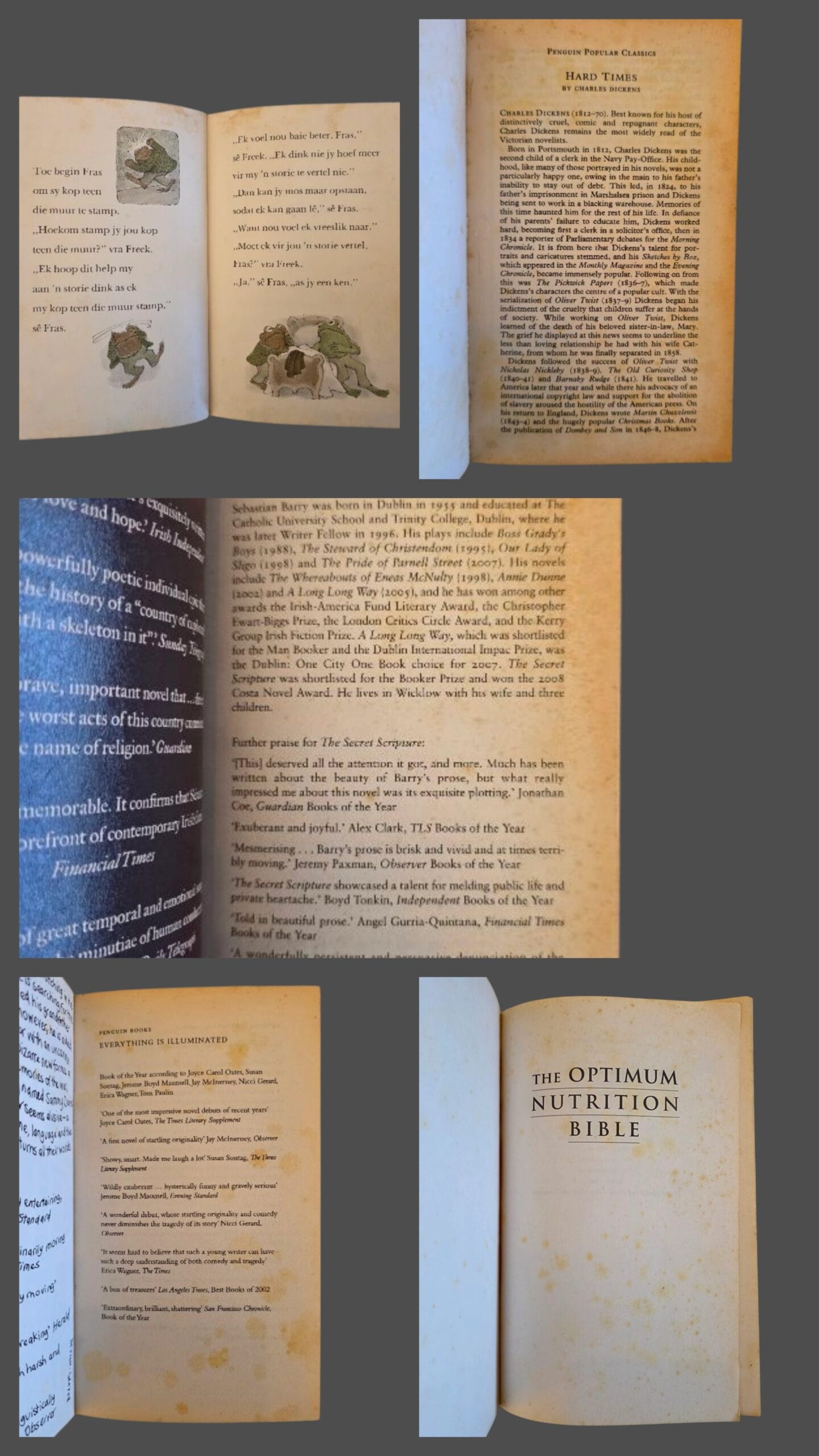
Hello, fellow book lovers! Welcome back to the Bee’s Books Blog, where we celebrate the charm and character of well‑loved volumes. Today, we’re talking about foxing—those lovely little reddish‑brown speckles you sometimes spot on the pages of books. Let’s explore what foxing is, why it happens, and why it doesn’t have to dim the delight of your next read.
What Is Foxing?
Foxing refers to the tiny orange‑ or brown‑toned spots or patches that appear on paper over time. The name comes from their fox‑fur–like colour. They often show up on endpapers, title pages, and occasionally throughout the text block. Think of them as a natural, time‑worn patina—proof that a book has lived a rich life.
What Causes Foxing?
Foxing arises primarily from the minerals and impurities in older paper reacting with oxygen over years. Just as iron rusts when exposed to air, metallic traces (like iron or copper) embedded in paper can oxidize and leave those distinctive foxing marks. Environmental factors—particularly humidity and temperature fluctuations—can accelerate this process, but the core cause is the paper’s own composition.
Does Foxing Detract from Quality?
Great news: foxing is purely cosmetic! It doesn’t affect the ink, the legibility of text, or the structural integrity of the pages. Here’s why foxed books remain treasures:
- Crystal‑Clear Text: Your story, illustrations, and annotations are untouched by foxing.
- Sturdy Bindings: These spots don’t eat away paper fibres, so bindings stay firm.
- Vintage Appeal: Many collectors prize foxed editions as authentic markers of age and provenance. A few freckles can make a book feel all the more genuine.
Caring for Your Foxed Favourites
While you can’t reverse foxing once it’s set in, you can prevent new spots from appearing:
- Control Humidity: Aim for around 40–55% relative humidity in your bookshelves.
- Keep Temperatures Stable: Fluctuations encourage oxidation, so maintain roughly 18–22 °C (65–72 °F).
- Encourage Airflow: A well‑ventilated space helps avoid moisture buildup.
- Handle with Care: Clean, dry hands prevent oils and contaminants from settling into the paper.
If you ever want a pristine look, professional conservators can sometimes reduce foxing, but many of us prefer to let these natural freckles remain—a testament to each book’s journey.
Celebrate the Stories Behind the Spots
At Bee’s Books, we adore the character that foxing brings. Those tiny speckles are like whispers of decades past—of cozy reading nooks, bustling libraries, and quiet moments of discovery. Rather than viewing foxing as a flaw, embrace it as part of your book’s rich history.
So next time you spot those charming brown spots, remember: they’re not defects but delightful reminders that your book has stories to tell—beyond the words on its pages.
Happy reading, and long live foxing!
— Your friends at Bee’s Books





